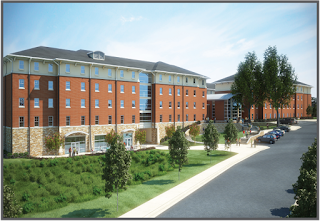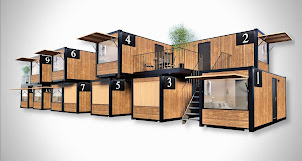Due to out of control real estate prices, loss of jobs due to Covid-19 and an ever growing need for Affordable Housing, across all communities. Many Senior Citizens are being forced out of the communities they have worked and lived in their whole lives. Forcing them to either relocate, if they are fortunate enough to be able to do so, or end up homeless, which is unfortunately becoming way too common.
 |
| San Diego Plan for the Elderly |
Communities across the world are looking for ways to accommodate the growing population of older adults.
Due to longer lifespans and decreasing birth rates, older adults make up a larger percentage of the population
than ever before. In San Diego County, seniors over the age of 65 will make up an estimated 21% of the
population by 2030, up from 13% today. There is no single point to solving this crisis. It requires the the entire community from local and county governments, to charitable organizations. Yet overall the single highest cost in living expense for most senior citizens is housing costs. A higher proportion of California’s older renters
spend an oversized share of their income on rent
than the population as a whole. Underscoring the
nexus between income and rent affordability.
California’s older renters are more likely to be
rental cost-burdened because they have lower
incomes than the population overall. Additionally,
as older renters age, they face an increased
likelihood that they have depleted their savings or
lost a spouse, resulting in older renter households
age 75+ facing even higher cost burdens than
households age 62+.
Across all racial and ethnic categories, a
higher proportion of older renter households are facing Severe Rental Cost Burdens. More than half of older renter
households (53% or 4.7 million households)
are housing insecure, and almost one
in three (30% or 2.6 million households) are experiencing severe housing insecurity or homelessness.
As of December, 2020, 30% of all renter
households with a member age 65 and older
reported a loss of employment income since
March, and more than 9% of older renter
households were behind in their rent
payments. No single company, organization or government can solve the problem. It will take all of the above. It will take a change in local government policy as well as a change in our communities, with all parties working together to begin solving this problem.
 |
| Base Yearly Living Expense of a Single, Healthy Senior Citizen |
The above chart shows the yearly base cost of a single healthy senior to live in Santa Barbara County. Considering that the average monthly Social Security Retirement benefit is $1,437.55, with those at the lower end receiving $1,280.84 and too many well below $1,000. There is basically zero chance for a senior relying solely on social security, to reach this level.
However fortunately due to new regulations, government grants and what has become a dire need for Affordable Senior Housing. UCG is looking for older properties that can be re-purposed and quickly converted into Emergency Housing for seniors as well as finding potential land for building new Affordable Modular Permanent Housing.
Where we fit into this is providing as many options for Affordable Senior Housing as possible. Fortunately the State of California has developed several programs tom help solve the problem and the individual Counties and Cities are also doing their part. The plan is not complicated, it just requires a commitment to be resolved.
The 4 key Elements to Solving the Housing Problem
1. Implement zoning ordinances and design requirements that create accessible, mixed-use villages with a variety of housing types and services.
2. Implement policies and programs to prevent and overcome homelessness.
3. Institutionalize a coordinated approach to creating and financing
affordable housing stock.
4. Develop comprehensive supports associated with housing for
successfully aging in community.





















